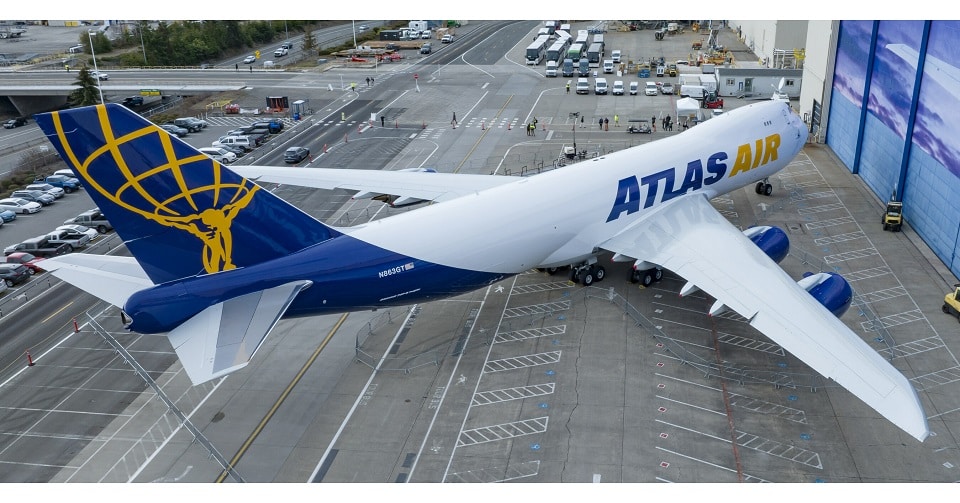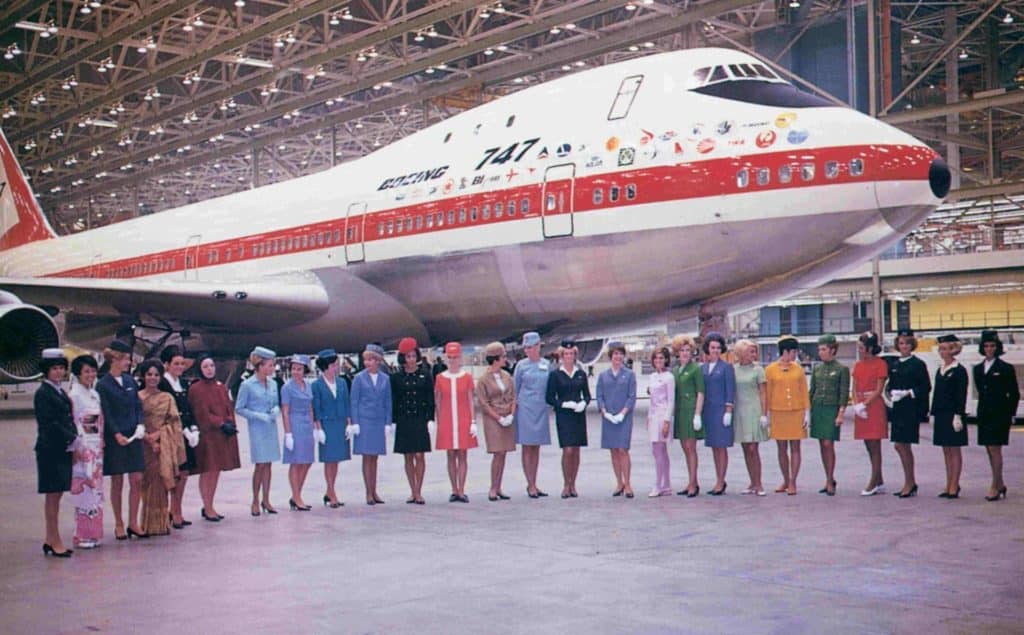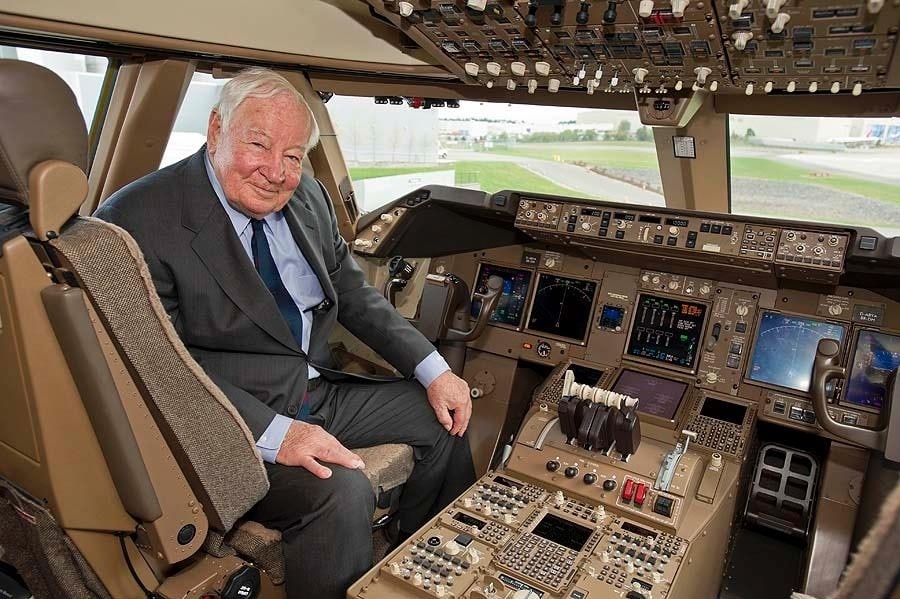Airlines
Boeing, Atlas Air Celebrate Delivery of Final 747, an Airplane that Transformed Aviation and Global Air Travel

EVERETT, Wash., Jan. 31, 2023 /PRNewswire/ — Boeing [NYSE: BA] and Atlas Air Worldwide [Nasdaq: AAWW] joined thousands of people – including current and former employees as well as customers and suppliers – to celebrate the delivery of the final 747 to Atlas, bringing to a close more than a half-century of production.
Boeing employees who designed and built the first 747, known as the “Incredibles,” returned to be honored at the Everett factory where the journey of the 747 began in 1967. The factory produced 1,574 airplanes over the life of the program.
“This monumental day is a testament to the generations of Boeing employees who brought to life the airplane that ‘shrank the world,’ and revolutionized travel and air cargo as the first widebody,” said Stan Deal, president, and chief executive officer of Boeing Commercial Airplanes. “It is fitting to deliver this final 747-8 Freighter to the largest operator of the 747, Atlas Air, where the ‘Queen’ will continue to inspire and empower innovation in air cargo.”
- Largest commercial aircraft: The 747 was the largest commercial aircraft when it was first introduced in 1970, and its size has been surpassed only by the Airbus A380.
- Longest production run: The 747 had the longest production run of any commercial airliner, with continuous production from 1968 to 2021.
- Most units produced: The 747 is the most-produced wide-body airliner in history, with over 1,500 units produced.
- Fastest transatlantic crossing: The 747 set a record for the fastest transatlantic crossing by a commercial airliner, completing the journey in just under 4 hours.
- Most passengers carried: The 747 has carried more passengers than any other commercial airliner, with over 5 billion people flown on the aircraft.
- Most cargoes carried: The 747 is also the most widely used cargo aircraft in the world, having carried more cargo than any other aircraft.
- Longest-range commercial airliner: The 747-8, the latest version of the 747, is capable of flying non-stop for over 8,000 nautical miles, making it the longest-range commercial airliner in the world.
- Most fuel-efficient wide-body airliner: The 747-8 is also one of the most fuel-efficient wide-body airliners, with fuel consumption that is significantly lower than its predecessors.

The-first-manufactured-747-at-Boeing’s-Everett-factory-in-1968-with-cabin-crew-representing-all-the-airlines-with-orders-for-the-aircraft
“We are honored to continue our long history of flying this iconic aircraft for our customers around the world,” said John Dietrich, president, and chief executive officer, Atlas Air Worldwide. “Atlas Air was founded over 30 years ago with a single 747-200 converted freighter, and since then, we have spanned the globe operating nearly every fleet type of the 747, including the Dreamlifter, Boeing’s 747 Large Cargo Freighter, for the transport of 787 Dreamliner parts. We are grateful to Boeing for their shared commitment to safety, quality, innovation, and the environment, and for their partnership to ensure the continued success of the 747 programs as we operate the aircraft for decades to come.”
As the first twin-aisle airplane and “jumbo jet,” the “Queen of the Skies” enabled airlines to connect people across vast distances and provide non-stop trans-oceanic flights. Its development solidified Boeing’s role as an industry leader in commercial aviation. The airplane’s core design with its distinctive hump and seating in the upper deck has delighted generations of passengers and operators alike. Boeing continued to improve on the original design with models like the 747-400 in 1988 and the final 747-8 model that was launched in 2005; across all the models, the jet has delivered unmatched operating economics and efficiency to travel and air cargo markets.

Airlines
A software error caused grounding the entire airline fleet

On Wednesday, the U.S. Federal Aviation Administration (FAA) issued a ground stop advisory for all Alaska Airlines and subcarrier flights due to a software issue, disrupting travel plans for passengers.
The FAA directive, which prohibited the departure of Alaska Airlines mainline and subcarrier flights, was implemented as a precautionary measure following the detection of the software problem. The ground stop was initiated after Alaska Airlines encountered difficulties during a system upgrade related to the calculation of weight and balance for their flights.
As a result, the airline opted for a temporary suspension of all its operations to address the issue and ensure passenger safety. Alaska Airlines promptly issued a statement acknowledging the incident and expressing their commitment to resolving the matter swiftly. “This morning we experienced an issue while performing an upgrade to the system that calculates our weight and balance.
Out of an abundance of caution, we requested a ground stop for all Alaska and Horizon flights, which was instituted at approximately 7:30 a.m. PT,” the statement read. Passengers affected by the disruption voiced their concerns on social media platforms, prompting Alaska Airlines to reassure them of their efforts to minimize the inconvenience and expedite the resumption of flights.
Following approximately an hour-long interruption, the FAA lifted the ground stop order, allowing Alaska Airlines and its subcarriers to resume normal operations. However, it was clarified that SkyWest, which provides regional service for Alaska Airlines and other carriers, was exempt from the ground stop and continued its flights unaffected.
Aerospace
Which is bigger 777x or 787 aircraft ?

The 777X is a new series of the Boeing 777 family and is designed to be larger and more efficient than its predecessor. It features two variants: the 777-8 and the 777-9, being the larger of the two.
The Boeing 777X emerges as the larger sibling within the Boeing family, representing a significant leap forward in both size and efficiency. Comprising two variants, the 777-8 and the 777-9, the latter takes the crown as the larger of the two. With its expansive fuselage and impressive wingspan, the 777X is tailored for long-range journeys and boasts a substantial passenger capacity.
On the other hand, the Boeing 787, affectionately known as the Dreamliner, occupies a niche in the market as a smaller yet formidable aircraft designed for medium to long-range flights. Its distinguishing feature lies in its composite fuselage, a technological marvel that renders it lighter and more fuel-efficient compared to conventional aluminum counterparts. The Boeing 777X is larger than the Boeing 787 aircraft.
When it comes to passenger capacity, the 777-9 reigns supreme, typically accommodating a sizeable contingent of 400-425 passengers in its standard configuration. In contrast, the 787, with its more modest dimensions, typically carries between 240-290 passengers, depending on the variant and layout.
One of the remarkable innovations introduced with the 777X is its folding wingtips, a feature designed to address the logistical challenges of accommodating such a large aircraft in conventional airport gates. These folding wingtips enable the 777X to retract its wings, allowing it to fit into gates designed for smaller aircraft while still reaping the benefits of an extended wingspan during flight, thereby enhancing fuel efficiency and operational flexibility
Airlines
Why Don’t Airplanes Fly Over the Pacific Ocean?

Flights do indeed fly over the Pacific Ocean, but the routes they take are often determined by factors such as airline policies, air traffic control decisions, and weather conditions. The Pacific Ocean is one of the largest bodies of water on Earth, and it’s regularly crossed by numerous flights traveling between North America, Asia, Australia, and other destinations.
However, some specific routes might avoid flying directly over certain parts of the Pacific Ocean for various reasons. For example:
- Safety and emergency considerations: While modern aircraft are equipped with advanced safety features, airlines, and pilots may prefer routes that keep them closer to potential diversion airports or within range of search and rescue facilities in case of emergencies.
- Air traffic control restrictions: Airspace management authorities may impose certain restrictions or preferred routes for managing air traffic efficiently. These restrictions could be based on factors such as military operations, airspace congestion, or diplomatic considerations.
- Weather conditions: Pilots and airlines consider weather patterns when planning routes. While the Pacific Ocean generally experiences fewer weather-related disruptions compared to other regions, factors like turbulence, thunderstorms, or tropical cyclones can influence route selection.
- Managing Cost Factors: In route planning, airlines have to take fuel prices, maintenance costs, crew charges, and other operating costs into account. Direct routes over the Pacific Ocean may be more cost-effective for shorter distances, but they may also necessitate extra safety precautions, including carrying more fuel for longer overwater operations.
- Remote Locations and Navigational Challenges: The Pacific Ocean’s vastness poses navigational issues, particularly for aircraft operating over isolated regions with few ground-based navigational aids. For precise positioning and route direction, pilots must mostly rely on satellite-based technology and onboard navigation systems, which may necessitate additional training and equipment purchases.
- Lack of Suitable Landing Options in the Pacific Ocean: Unlike regions with dense air traffic and numerous airports, the Pacific Ocean has vast stretches of open water with few suitable landing options in case of emergencies. While long-range aircraft are equipped with safety features like life rafts and emergency locator transmitters, the lack of nearby airports can increase the time it takes for rescue and recovery operations to reach distressed aircraft, posing additional risks to passengers and crew. Therefore, flight routes may be planned to ensure proximity to potential diversion airports or alternate landing sites in case of unforeseen circumstances.



























